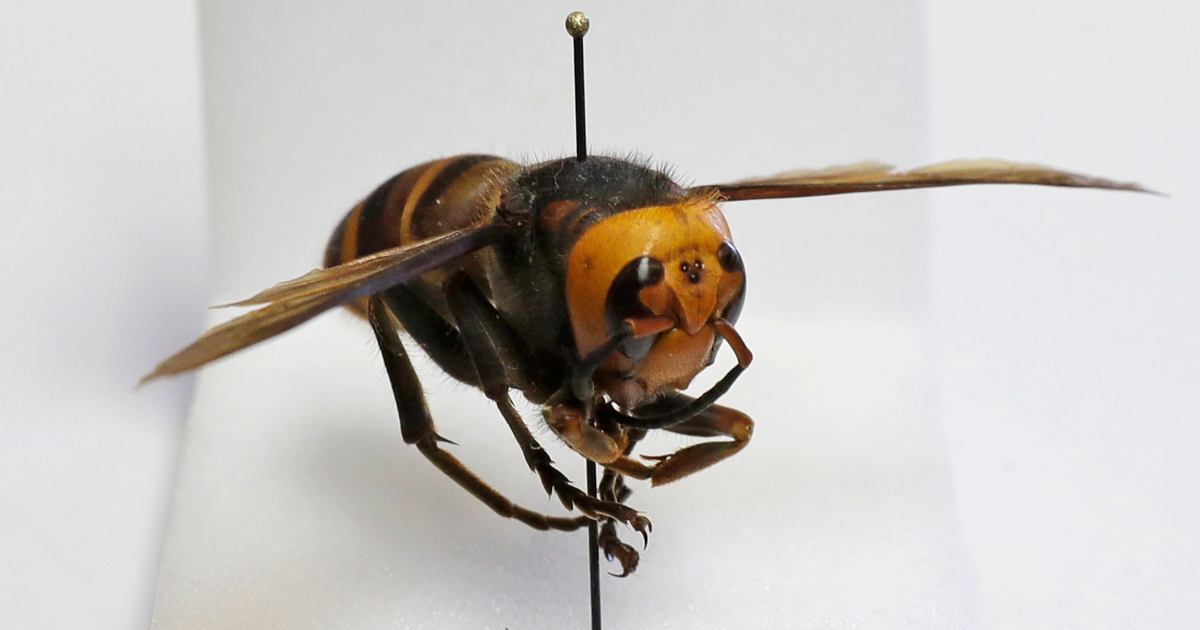
Just call them giant hornets.
The term “murder hornet” skyrocketed into popularity last week after the New York Times published a viral story about the arrival of an invasive insect species in Washington state (“murder hornet” is in the headline). Mashable, like many other outlets, used the term, too. But entomologists say that’s an irresponsible name for the species, Vespa mandarinia, even if it’s the largest hornet in the world at some two inches in length.
“It’s a ridiculous name,” said Akito Kawahara, an entomologist at the Florida Museum of Natural History who researches the evolution and diversity of insects. “I think it’s totally misleading.”
“Insects already have a bad perception,” he added.
The word “murder” conjures notions of something that presents a terrible danger or threat to people. But the arrival of the giant hornets, commonly called Asian giant hornets, in Washington state is nothing approaching a calamitous, universal human scourge, like, say, a viral pandemic with no vaccine nor treatments.
The insects are not even commonly called “murder hornets” in Japan, where they’re native. “No one calls them ‘murder hornet,'” explained Kawahara. “People there often call them a ‘large hornet’ or a ‘giant hornet,'” he said.
These bugs aren’t looking to attack people (though you wouldn’t want to rustle a hornet’s nest), and there were only two confirmed reports of the hornets in Washington in 2019. However, if it turns out the invasive species has established many colonies in the region, the hornets could pose a threat to Western honey bees, as they decimate beehives, beheading most bees inside.
“Don’t freak out,” cautioned Kawahara, noting it’s unknown how many hornet colonies there are in the U.S. “Lots of things come to the country and they aren’t able to survive. Just be aware.”
Nature should certainly be respected, but not viewed negatively. Sensationalizing the threat of animals generally creates the wrong impression that nature is inherently harmful, or scary. “It’s one of the most destructive messages that we can put out there,” said Douglas Tallamy, a professor of entomology and wildlife ecology at the University of Delaware.
Our species isn’t separate from nature. Rather, “We’re part of nature and we can’t live without it,” Tallamy emphasized. Bees fertilize our crops. Bats control massive insect populations, fertilize plants, and spread seeds. The sockeye salmon people devour support entire Alaskan ecosystems.
Here’s a @ConversationUS piece I wrote on murder hornets & my experience w/them in Japan. 0 US cases in ’20. If you find one, take a pic, many similar wasps. “Murder hornet” is misleading, Asian giant hornet is a bad name. Keep it simple: Giant hornet! https://t.co/Tj61A9p40K
— Dr. Akito Kawahara (@Dr_Akito) May 11, 2020
And in Japan, the giant hornets are used to control agricultural pests, noted Kawahara.
This large invasive hornet might now have a buzzworthy, sensational name, but at the end of the day, it’s just another invasive species that insect experts will try and eradicate — before potential harm is done to established and native bee species in the U.S.
“One of the big things we do as entomologists is keep an eye on invasive species all the time,” Tim Kring, the head of the Virginia Tech Department of Entomology, explained in an email. “Some are big and flashy and get press (like this), others that are much more damaging to natural systems, agriculture and the economy (like the emerald ash borer, spotted lanternfly, or Asian long-horned tick) don’t get the press because they don’t have such cool (but not-accepted by any scientist) names like ‘murder hornet.'”
There’s already a pretty big invasive hornet in the U.S., the European giant hornet. It has spread over most of the eastern U.S since the 1800s. But, importantly, it hasn’t brought calamity.
“It’s a ridiculous name.”
“It’s a big fella and it hasn’t wiped us out yet,” said Tallamy, noting the European giant hornet is slightly smaller than the Asian giant hornet.
“It comes in my yard,” he added, referencing how commonplace the big bugs are.
If any species should be labeled “murderer,” it might be our domesticated cats, that when allowed outside decimate native birds. Cats kill some 1.4 to 3.7 billion birds in the U.S. each year.
“Now that’s murder,” said Tallamy.
While entomologists widely agree “murder hornet” is a poor name (to put it gently), there isn’t a clear consensus on what the name should be. Kring, of Virginia Tech, uses the scientific name, Vespa mandarinia, for now, until perhaps another common name is approved by the entomologist community. “Asian giant hornet” is frequently used, too, though the Florida Museum’s Kawahara suggests just “giant hornet.” That’s because of the tendency for some people to use the word “Asian” in pejorative ways — as has been similarly done with the coronavirus.
“There’s potential for problems that should be avoided,” Kawahara said.
Unlike the new coronavirus, however, these big hornets are not some novel scourge that now smites humanity. In Japan, for example, they’re a normal species, a piece of the natural world.
“They’re just part of life,” said Kawahara.
